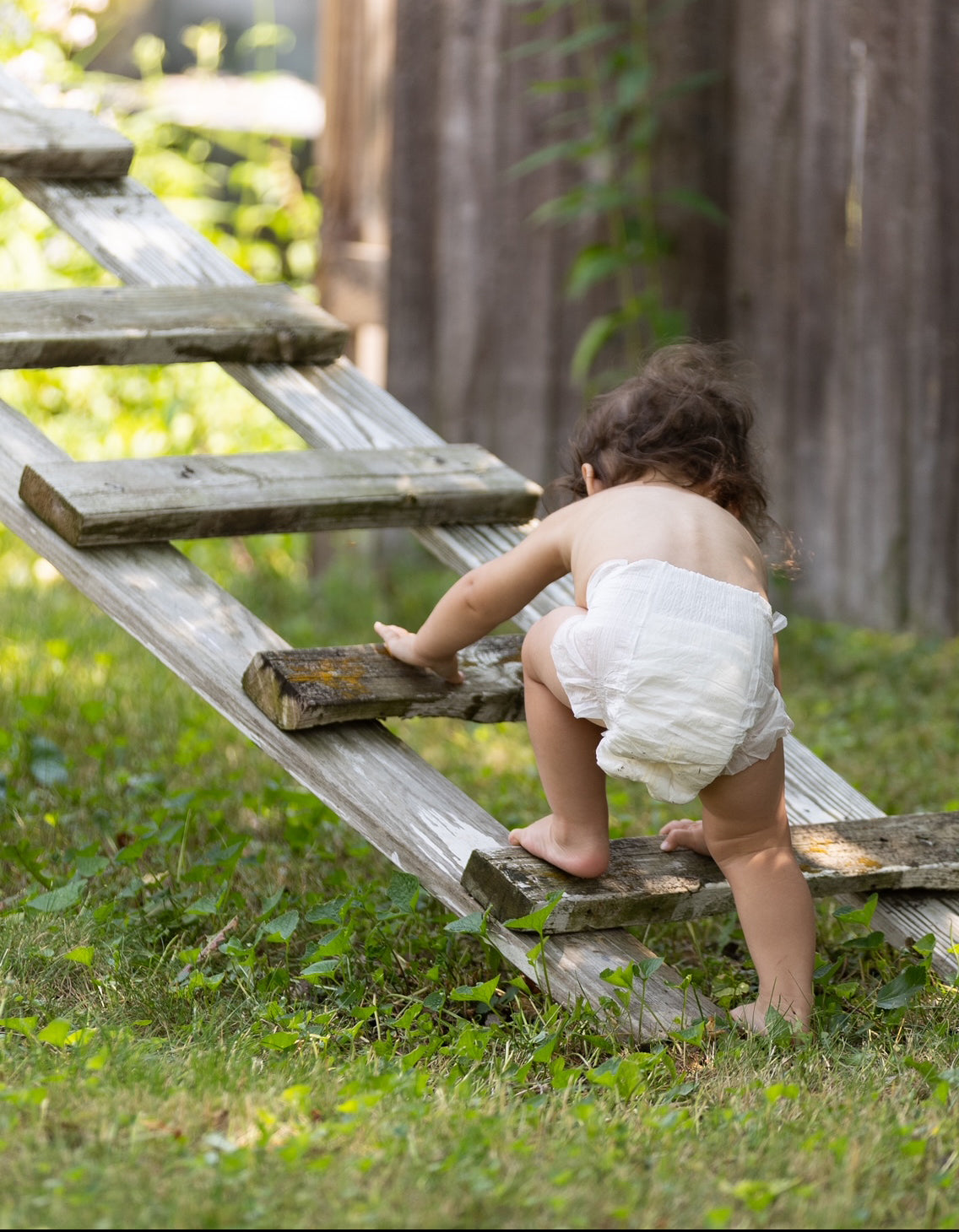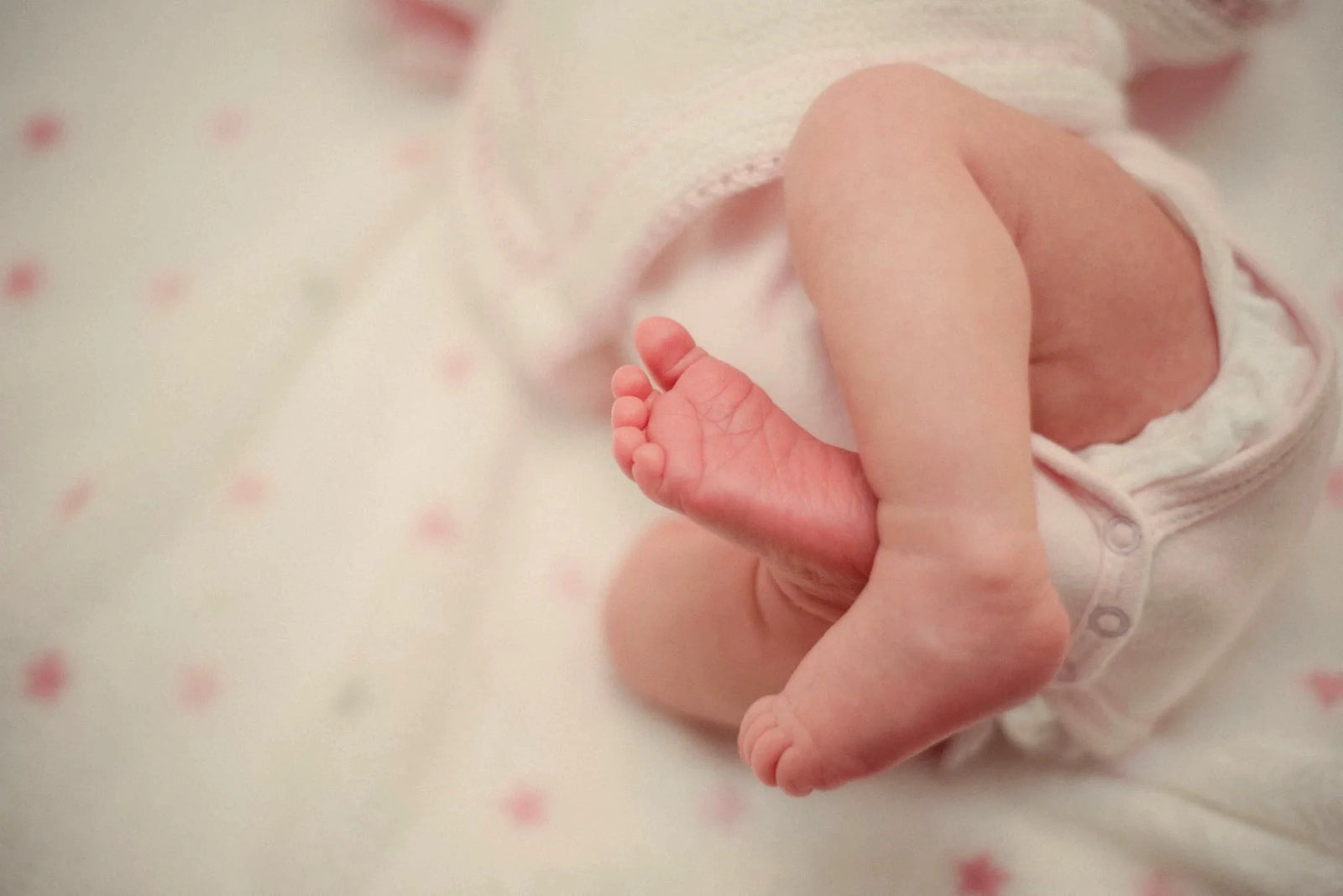*Please follow guidance from your pediatrician and safety guidelines when choosing the best sleep situation for your baby and your family. This article is not a substitute for medical guidance and common sense safety.*

Across cultures and history, co-sleeping and bed sharing have been common practices for a myriad of reasons from space constraints to cultural practices. However, in current Western society, it is a highly debated topic and not commonly practiced. While some families firmly believe that their baby should only sleep in a crib in their own room, an increasing number are participating in a range of sleep practices from co-sleeping to bed sharing. Let’s discuss what it is, why you may or may not choose to practice it, and how to do it more safely.
The American Academy of Pediatrics (AAP) recently updated their safe sleep guidelines and now recommends having your baby sleep in the same room, but not the same bed, as their parents until age 6 months.
What is co-sleeping? Bed sharing?
Co-sleeping and bed sharing, while often used interchangeably, are not the same thing. Co-sleeping is having your baby sleep in the same room as you but on their own sleep surface. Bed sharing is when your baby shares a sleep surface with you, such as your bed. Both have your baby nearby, but the main difference is that baby either has its own or a shared sleep surface.
While highly discouraged by pediatric and health professionals, many families do sleep with their babies at some point on the same sleep surface. The exact statistics are hard to come by as it is frequently underreported. I did not disclose bed sharing with my pediatrician when asked about newborn sleep because I knew it was not in accordance with the AAP guidelines. Oftentimes bed sharing is inadvertent, due to fatigue and convenience. As a new parent, I found myself dozing off while holding my newborn during breastfeeding even though I had intended to place him in a bassinet near my bed. I had numerous safe sleep surfaces purchased yet continually fell asleep with him on me. I had anxiety about safety and sought out resources on how we could bed share more safely. It was challenging to find solid resources on how to bed share safely as it is not encouraged. As a postpartum doula, I was warned of the risk of discussing anything beyond approved safe sleep guidelines by the AAP and found that other postpartum and pediatric professionals were as well.
Benefits
The biggest benefits of co-sleeping and bed sharing are longer term breastfeeding and more sleep for the breastfeeding parent. Typically with nighttime breastfeeding, the parent doesn’t need to fully disrupt their sleep to feed and both parent and baby fall back to sleep quickly. With easy access to the breast, babies feed often and for a longer duration of the breastfeeding relationship. The AAP recommends breastfeeding for at least 1 year, this can make meeting that goal more feasible.
While it may sound counterintuitive, babies who co-sleep tend to sleep more lightly and rouse more often to breastfeed. This is actually a desirable trait as it reduces the risk of SIDS. This reduced risk is true only for co-sleeping, not bed sharing. Babies who co-sleep also regulate their breathing more effectively when hearing adults breathing in the same area.
Studies have also shown benefits for male partners who co-sleep as well. It is reported that testosterone levels are lower in men who sleep near their babies and participate in more responsive parenting.
Risks
The biggest risk of bed sharing is an increased risk of sleep related infant death, including SIDS and SUIDS. Studies have shown an increased risk with bed sharing but areduced risk for SIDS when co-sleeping in the same room for the first 6 months.
I believe that whatever choices you make for your family, having information on safety is essential. Refusing to discuss safe co-sleeping and bed sharing information because pediatric professionals discourage it, does not eliminate it from happening but rather from happening more safely. That being said, it is important to note that there is no way that is considered 100% safe for bed sharing due to the inherent risks of having your baby on the same sleep surface, with pillows and blankets nearby.
Before we dive in further, let’s discuss the basics of safe sleep for a full term, healthy infant. Please keep in mind that your pediatrician may make other recommendations for babies who are preterm, underweight, or require other medical care.
Safe Sleep Guidelines (AAP)
Regardless of where your baby is sleeping, you should always follow these guidelines for safe sleep practices.
- Flat, firm surface: There should be no incline or cushy mattress. Inclined swings are not safe for sleep, particularly unsupervised.
- Back to sleep: Baby should be placed on their back, not their stomach or side.
- Nothing In Bed: No blankets, pillows, stuffed animals/ toys, or crib bumpers.
- Sober: Avoid parent and infant exposure to nicotine, marijuana, opioids, alcohol, and other illicit drugs.
- Healthy: Baby receives routine immunizations and is deemed healthy by their pediatrician.
- Receives Some Breastmilk: The AAP recommends feeding your baby at least some human milk (breastmilk from the breast or bottle) for 1 year, but a minimum of 2 months to reduce the risk of sleep-related deaths.
- Do Not Rely on Devices: Do not use devices that claim to reduce SIDS. Reliance on these commercial products may provide a false sense of security.
Co-sleeping is now recommended by the AAP for the first six months of your baby’s life. This can be accomplished by having your baby sleep in the same room as you, on their own sleep surfaces such as a crib or bassinet. There are bedside bassinets that make the middle of the night feeds more convenient with side rails that lower while allowing your baby to sleep on their own mattress, separate from an adult. These types of bassinets can also make breastfeeding or picking up an infant after a cesarean birth more comfortable by reducing the need to bend over as far.
Bedside Bassinets:
Milliard Bedside Bassinet ($167),Halo ($300),Arms Reach ($220),Baby Delight ($202),Beaba ($350)
Safe Bed Sharing Steps
Bed sharing often happens unintentionally. Making yourself aware of how to bed share more safely is important for when you do intentionally or unintentionally bed share with your baby. La Leche League has created a Safe Sleep 7 guideline to help prepare families for this choice. Please note that these guidelines are for exclusively breastfed infants fed at the breast rather than a bottle. Parents who breastfeed areless likely to reach deeper states of sleep and remain more alert during the night than those who bottle feed, regardless of what’s in the bottle. Babies who breastfeed from the breast will seek out the breast during the night versus bottle fed babies who often move away from the parent during sleep. Breastmilk digests faster than formula, requiring breastfed babies to feed more often and stir from sleep more often. Waking during the night for feedings has been shown to reduce the risk of SIDS.
*Please note that it is never considered safe to sleep with your baby while in a chair or on the couch due to fall and suffocation risks
- Everyone Agrees: Each person who will be sleeping in the bed with the infant should be in agreement with bed sharing and agree with accepting risks and responsibilities for the baby’s well-being.
- Sober: Adults in the bed must be sober (no alcohol, drugs, or medications that cause drowsiness). Any substance that may alter your ability to respond, be aware, or impair awareness should not be ingested if you will bed share with a baby. If you must take medication that inhibits your ability to function, please place the baby to sleep on a separate surface.
- No Siblings: Babies under age 1 should not bed share with other siblings or children.
- Breastfed babies only: Never bedshare with babies who are not exclusively breastfed at the breast. Bottle fed babies should always have their own separate sleep surface.
- Firm Mattress: Soft, plush mattresses are a suffocation risk should the baby turn face down. Ensure that you have a firm mattress, or place a firm mat like a yoga mat between the mattress and fitted sheet.
- Unswaddled and on Back: Bed sharing babies should not be swaddled. This allows their arms and legs to be free to kick off blankets that may come loose. All babies should be placed to sleep on their backs.
- No Loose Blankets or Extra Pillows: Blankets and pillows should never be near an infant’s face or body. They are unable to remove them if they accidentally get moved onto their face and risk suffocation. If you need to sleep with a pillow, ensure that you place the baby at breast level, well below the pillow. Blankets should be light and not come above the waist. This can be accomplished by tucking the blanket firmly into the mattress end and sides.
- Dressed Appropriately: The general rule of thumb for infant dress is no more than one layer more than an adult. If you are concerned about the baby being cold, using a wearable blanket over pajamas is an appropriate option. Be sure not to overdress babies as they do not yet have the capability to cool themselves and can overheat. The use of weighted blankets, weighted sleep sacks, or weighted swaddles is not recommended by the AAP.
- Cuddle Curl: The cuddle curl is a natural protective position that breastfeeding parents instinctively take around their babies. While laying on your side, the bottom arm extends above the head of the baby, while the knees tuck up to nestle below the feet of the baby. This keeps the baby at breast level and keeps your own body alert enough to avoid rolling.
- Pack the Cracks: Any cracks around the mattress, wall, and bed frame should be firmly packed with a firm material. If cracks are present, there is a risk that baby could roll into the crack and become stuck, risking suffocation.
- Tie Back Long Hair: Long hair should be tied up and away from any areas that could be reached by the baby.
- Do Not Leave Unattended: Baby should not be left unattended in an adult bed, even during naptimes. If you prefer to have baby nap unattended, please consider moving them to an approved safe sleep surface such as a crib or bassinet.
- Consider the Risk: Consider and discuss the risk of potential hazards of bed sharing. While no one wants to consider SIDS, it is important to have an honest reflection with yourself if you do choose to bed share about the risk and assumption of liability.
Every family makes choices that are best for them and their own circumstances. Having up-to-date information, awareness of the risks and benefits, how to practice safe and safer sleep practices, and making the appropriate adjustments for baby’s safety will set you up for your best experience. As always, please speak with your pediatrician if you have any questions, concerns, or difficulty understanding best practices for your own unique situation.
*********Below photo is an example of what NOT to do. I want to ensure that whatever graphics are used for this post do not show improper bed sharing or unsafe sleep practices. Baby should be on it’s back, no pillows or blankets near them. No excessive pillows around the parent. If in a crib or bassinet there should be NO pillows, stuffed animals.*********

Birth and Postpartum Doula
Childbirth Educator
Certified Lactation Counselor
Pre/Post Natal Yoga Teacher



